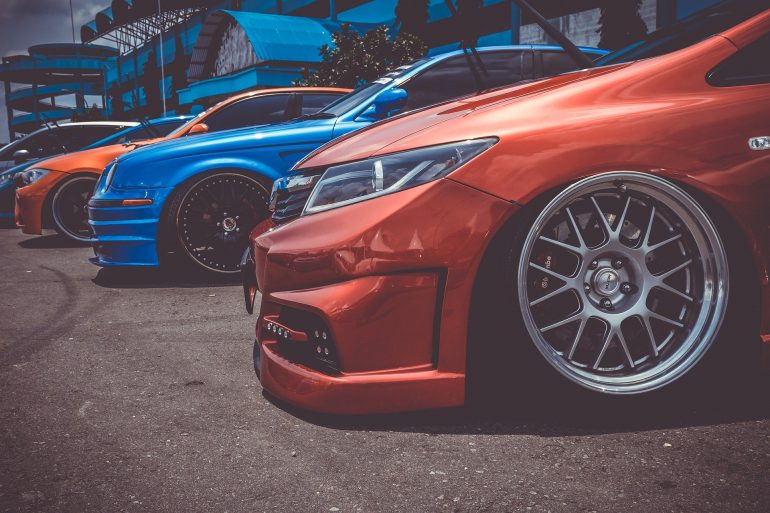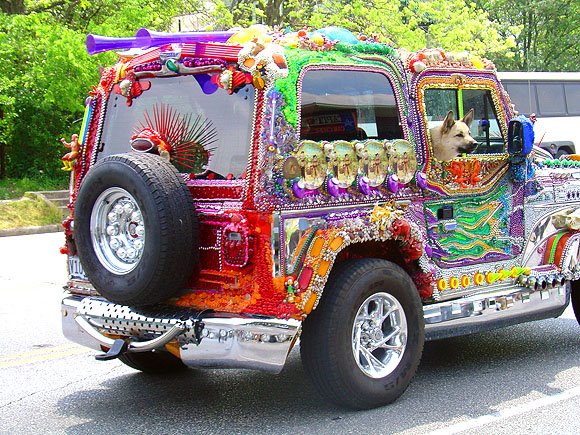Like a piece of clothing or a smartphone, a car might not quite feel like genuinely yours until it has received a few… tweaks. That’s where the appeal of modifying a car can become obvious. Much like your handset could benefit from its own case or a replacement battery, your motor could be given anything from a shiny new window sticker to a larger, more powerful engine.
These days, it’s delightfully easy to modify your car… or, perhaps we should say, “pimp your ride”. Even the Red Bull website outlines a few easy ways you can do it. The myriad of options has undoubtedly fuelled the car-modifying scene’s continued popularity.
However, in researching those options, you might have occasionally come across the term “kit car”. Don’t be fooled; the terms “modified car” and “kit car” aren’t interchangeable. They do, however, refer to similar things, which is why it would be helpful if you were enlightened as to the differences.
Firstly, what’s a “modified car”?
In the automotive world, this term is now used so casually that you may have come to deem it largely self-explanatory. Indeed, in many ways, it is. However, the picture isn’t quite so clear-cut when you ask insurers, who tend to follow one of two distinct definitions.
Mercifully, those differences are explained in an Auto Express article. Some insurers deem a vehicle modified “if it has been changed in any way since it was first supplied by the vehicle manufacturer”. Therefore, if your vehicle hasn’t, you’re off the hook for mod-related hikes in your premiums.
However, the other definition cited by the British Insurance Brokers’ Association (BIBA) is a car that has received “any alteration to the manufacturers’ standard specification… including optional extras fitted to the car when new by the vehicle manufacturer or dealer, which improve its value, performance, appearance or attractiveness to thieves.”
Examples of car modifications
You could be surprised by how strict certain insurers can be when it comes to what they define as a car modification. One report by The Guardian refers to an alternative way of categorising car mods: as “power-related” or “cosmetic”.
The former refers to changes you had probably already classed as modifications, such as making the engine larger or securing alloy wheels into place. Conversely, it’s not always clear what counts as a “cosmetic” mod, though it can be something as simple as a sticker or slogan.
If you are unsure whether your insurer would perceive a particular feature on your vehicle as a “modification”, just ask them for clarification. Different insurers impose different rules, and failing to declare modifications to your insurer risks voiding your car insurance.
Now, what exactly is a “kit car”?
While telling a modification from a non-modification can be tricky, learning the difference between a “modified” and “kit” car is fortunately much more straightforward. An especially good definition can be seen on the Friday-Ad website: the phrase denotes “a collection of body parts and mechanical components that can be used as the building blocks to create a safe vehicle for the road.”
In a sense, then, assembling a kit car is akin to building a Lego car on a grand scale – but the finished vehicle really does have to be roadworthy. BT points out the necessity of taking that vehicle for an IVA (Individual Vehicle Assessment), “which is a bit like a super-thorough MOT.”
This test verifies that the car is both safe and legally compliant. Once it has passed the IVA, that car can be taken onto the road. There’s something of a thriving kit car “community”, too, thanks to the array of owners’ clubs where you can learn more about how to reap maximum benefits from the car.
Insurance problems rear their ugly head again
Therefore, the difference between a “modified car” and a “kit car” can be summed up as thus: the former is a readymade car that has been altered since the original manufacturing process, while the latter is a car built in an amateur fashion from scratch.
This only strengthens the case for approaching a specialist insurer. Fortunately, the online world is rich in advice about how to obtain kit car insurance at a reasonable price.
Unfortunately, though, insurance concerns can follow you no matter which of these two routes you go down. Whether the kit car is to your custom design, is a rebuilt vintage vehicle or even came already assembled when you bought it, you should be wary of approaching a traditional insurer.
This is because, sadly, such insurers tend to undervalue kit cars, leading them to agree cover only for the vehicle’s market value rather than its true value. It’s possible for a kit car to have been modified, too. If you indeed own a modified kit car, the modifications could give rise to premium increases in themselves.
Rest assured though, although it might not prove to be the ideal insurance premium you hope for, there will be a deal out there that protects your investment – and all the time, money and dedication you’ve put into it.





